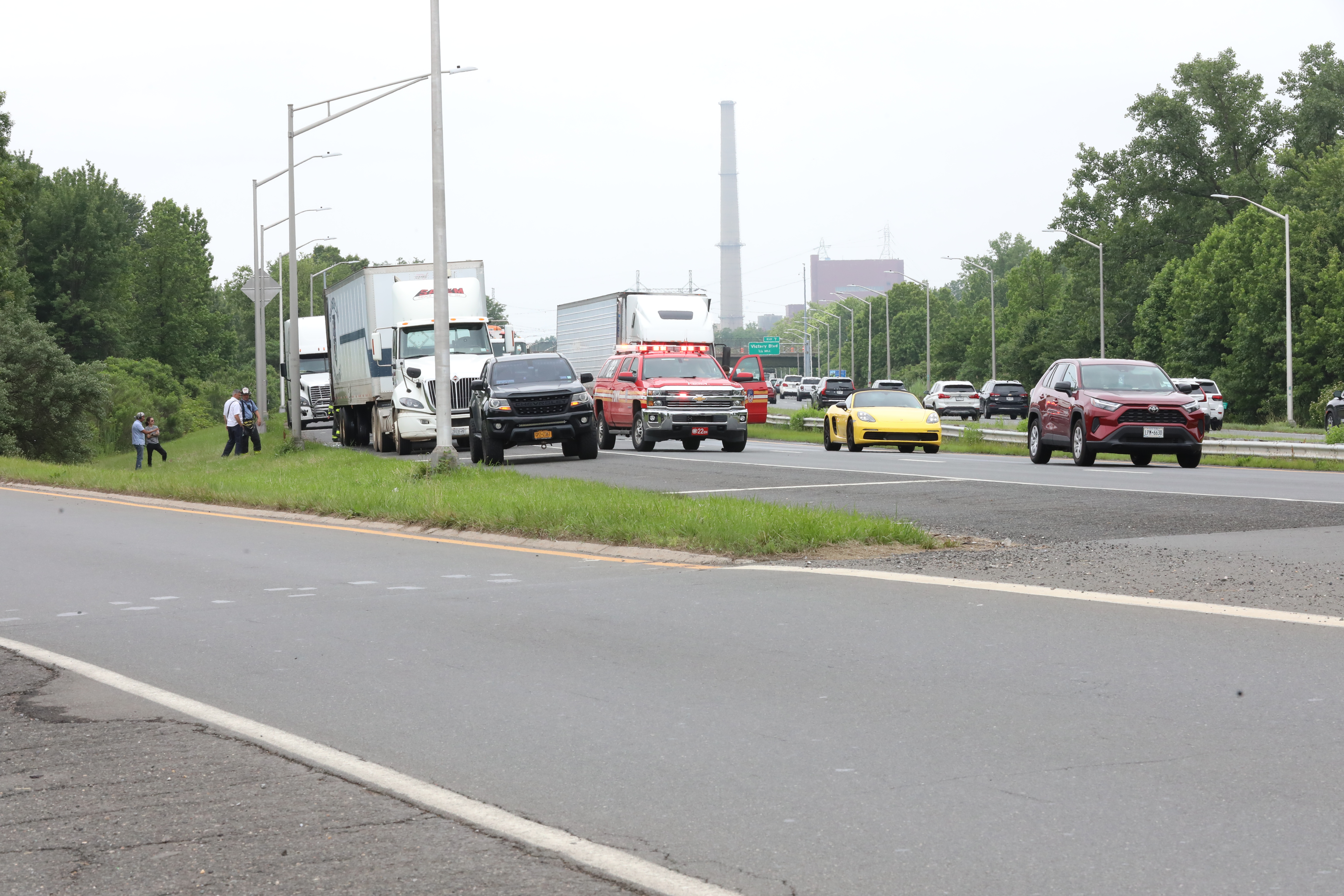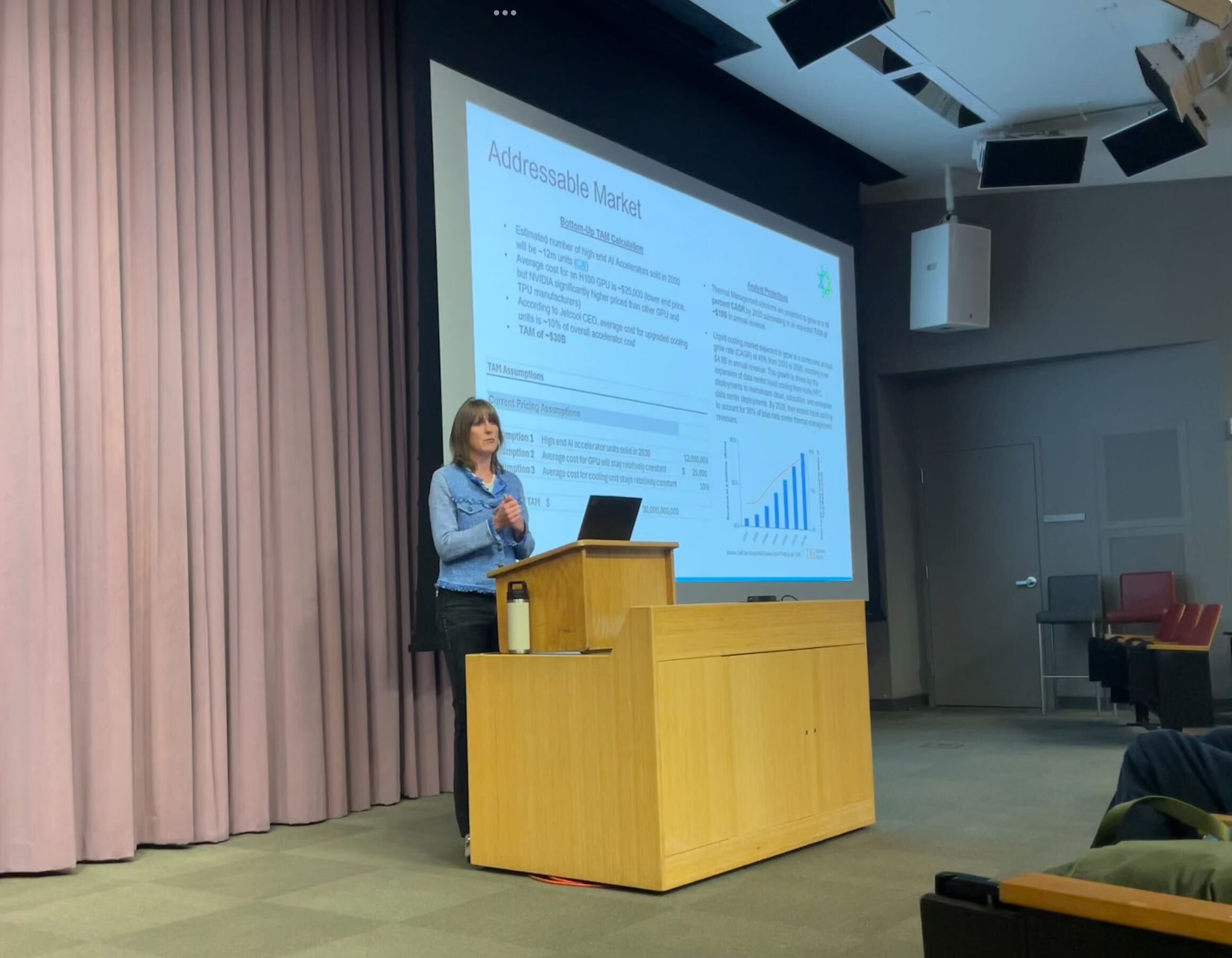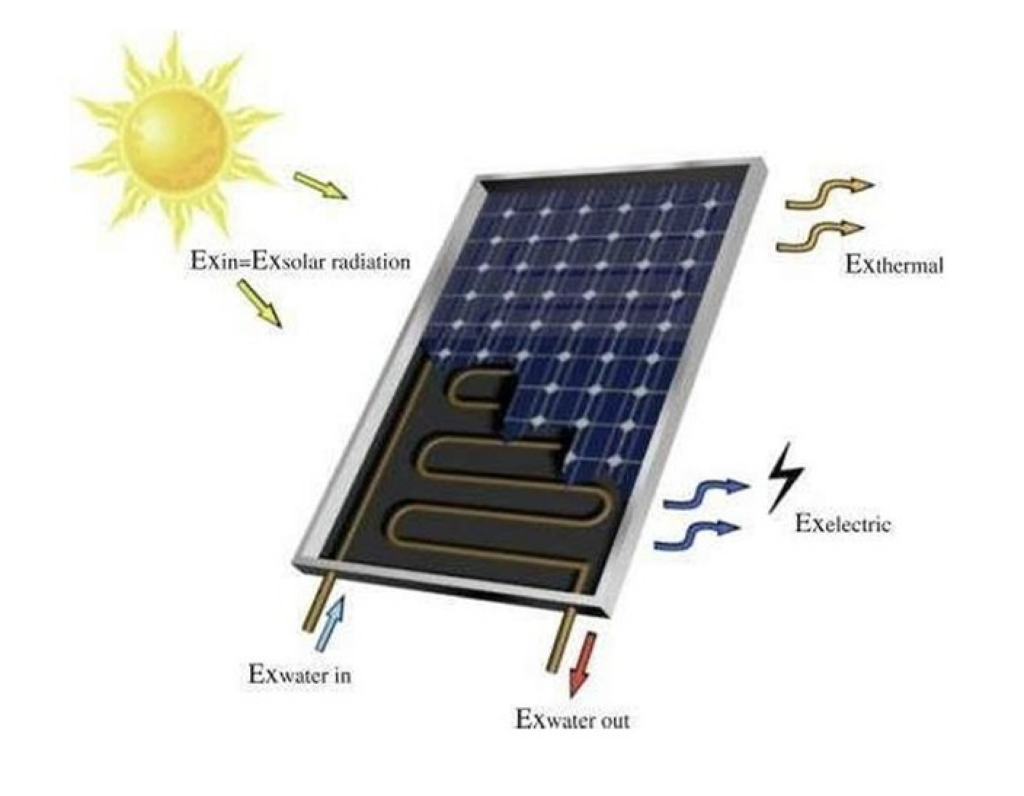EPA issues battery energy storage guidelines amid growing safety concerns – SILive.com

Report on Battery Energy Storage Systems (BESS) Deployment in New York and Alignment with Sustainable Development Goals
Introduction: The Dual Role of BESS in Sustainable Development
Battery Energy Storage Systems (BESS) are a critical technology for advancing global sustainability objectives. Their deployment directly supports key United Nations Sustainable Development Goals (SDGs), yet raises significant challenges for others.
- SDG 7 (Affordable and Clean Energy): BESS facilities are essential for stabilizing the electrical grid and storing energy from intermittent renewable sources like solar power. New York State’s goal of achieving six gigawatts of battery storage capacity by 2030 is a direct effort to advance Target 7.2, which aims to increase the share of renewable energy.
- SDG 13 (Climate Action): By enabling greater use of renewables, BESS infrastructure is a cornerstone of strategies to combat climate change and its impacts, aligning with the core mission of SDG 13.
Community Concerns and Implications for SDG 11 (Sustainable Cities and Communities)
Despite their climate benefits, the siting of BESS facilities in densely populated areas of New York has generated significant community opposition, highlighting a conflict with the principles of safe and sustainable urban development.
- Community Safety and Resilience: Residents in areas like Staten Island and Long Island have expressed concerns over the proximity of lithium-ion BESS facilities to homes, schools, and businesses. The risk of complex lithium battery fires poses a direct threat to public safety, challenging the objectives of Target 11.5 to make human settlements resilient to disasters.
- Local Environmental Impact: The placement of industrial-scale energy infrastructure within residential neighborhoods raises concerns about the adverse per capita environmental impact of cities, a key consideration under Target 11.6.
- Inclusive Urban Planning: Instances of community boards voting against projects and developers withdrawing plans after public opposition underscore the need for more inclusive and participatory planning processes, as advocated for by SDG 11.
Governance and Institutional Responses: Balancing Climate Goals with Public Safety
The tension between state-level climate policy and local safety concerns has prompted responses from federal agencies and highlights challenges in governance frameworks.
- State-Level Policy Acceleration: New York’s Renewable Action through Project Interconnection and Deployment (RAPID) Act expands state power to override local opposition to major renewable projects. While intended to accelerate progress towards SDG 7 and SDG 13, this approach may conflict with SDG 16 (Peace, Justice and Strong Institutions) by limiting local democratic participation.
- Federal Agency Intervention: The U.S. Environmental Protection Agency (EPA) has voiced concerns and is introducing new safety guidance for BESS projects. This represents an institutional effort to address risks to public health and well-being (SDG 3) and ensure community safety (SDG 11). The EPA’s guidance is the first comprehensive federal resource covering the entire project lifecycle, from siting to emergency response.
Conclusion: Towards an Integrated Approach for Sustainable Energy Infrastructure
The deployment of BESS in New York illustrates a critical challenge in the pursuit of sustainable development: balancing urgent climate action with the imperative to build safe, resilient, and inclusive communities. A successful path forward requires an integrated approach that ensures the goals of SDG 7 and SDG 13 do not compromise the fundamental principles of SDG 3, SDG 11, and SDG 16.
- Future energy projects must incorporate robust safety protocols and community engagement from the outset.
- Governance frameworks should empower local communities in the decision-making process for infrastructure projects that directly affect their health and safety.
- Achieving a just transition to clean energy necessitates that the benefits of climate action are shared equitably and its risks are managed responsibly.
Analysis of Sustainable Development Goals in the Article
1. Which SDGs are addressed or connected to the issues highlighted in the article?
The article discusses issues related to energy infrastructure, environmental policy, community safety, and urban planning, which connect to several Sustainable Development Goals (SDGs). The primary SDGs addressed are:
- SDG 7: Affordable and Clean Energy – The core technology discussed, Battery Energy Storage Systems (BESS), is directly related to energy storage, grid stability, and the integration of renewable energy sources.
- SDG 9: Industry, Innovation, and Infrastructure – The deployment of BESS represents a significant investment in and modernization of energy infrastructure, driven by technological innovation.
- SDG 11: Sustainable Cities and Communities – The central conflict highlighted in the article revolves around the siting of these industrial facilities in densely populated urban and suburban areas, community opposition, and the need for safe and resilient human settlements.
- SDG 13: Climate Action – The push for BESS is explicitly framed as part of New York’s “climate change agenda” and its strategy to meet “green” goals.
- SDG 3: Good Health and Well-being – The community’s concerns are rooted in the potential health and safety risks, specifically “dangerous lithium battery fires,” which could impact the well-being of residents.
2. What specific targets under those SDGs can be identified based on the article’s content?
SDG 7: Affordable and Clean Energy
- Target 7.2: By 2030, increase substantially the share of renewable energy in the global energy mix.
Explanation: The article states that BESS are “often used in conjunction with renewable energy sources like solar power.” Their deployment is a key component of a strategy to make the energy grid more compatible with intermittent renewable sources, thus helping to increase their share in the energy mix. - Target 7.a: By 2030, enhance international cooperation to facilitate access to clean energy research and technology… and promote investment in energy infrastructure and clean energy technology.
Explanation: New York’s ambitious goal of “six gigawatts of battery storage capacity by 2030” and the connection of “6,000 storage projects to its electric grid since 2019” are direct examples of promoting investment in clean energy infrastructure and technology.
SDG 9: Industry, Innovation, and Infrastructure
- Target 9.1: Develop quality, reliable, sustainable and resilient infrastructure… to support economic development and human well-being.
Explanation: BESS are described as infrastructure that acts as “backup power sources for homes or the grid, particularly during peak demand or power outages.” This directly contributes to developing a more reliable and resilient energy infrastructure. However, the community’s safety concerns challenge the “sustainable” and “support for human well-being” aspects of its implementation.
SDG 11: Sustainable Cities and Communities
- Target 11.3: By 2030, enhance inclusive and sustainable urbanization and capacity for participatory, integrated and sustainable human settlement planning and management in all countries.
Explanation: The article highlights a failure in participatory and integrated planning. The state’s power to “override local opposition for major renewable projects” through the RAPID Act is in direct conflict with this target. Community actions, such as “Community Boards voted against their proximity” and “elected officials issued a moratorium,” demonstrate a demand for more inclusive planning. - Target 11.b: By 2030, substantially increase the number of cities and human settlements adopting and implementing integrated policies and plans towards… disaster risk reduction…
Explanation: The fear of “dangerous lithium battery fires” is a significant disaster risk. The EPA’s development of “new BESS safety guidance” and “specialized protocols through responses to major incidents” are direct actions aimed at creating policies and plans for disaster risk reduction related to this new infrastructure.
SDG 13: Climate Action
- Target 13.2: Integrate climate change measures into national policies, strategies and planning.
Explanation: The article explicitly states that New York’s BESS deployment is driven by its “climate change agenda” and a “delusional ‘green’ goal.” The enactment of the “Renewable Action through Project Interconnection and Deployment (RAPID) Act” is a clear example of a state-level policy designed to integrate and accelerate climate change measures.
SDG 3: Good Health and Well-being
- Target 3.9: By 2030, substantially reduce the number of deaths and illnesses from hazardous chemicals and air, water and soil pollution and contamination.
Explanation: The community’s concern is centered on the potential for “dangerous lithium battery fires at BESS facilities,” which can release hazardous materials and cause widespread damage. The EPA’s role in “safely deactivating and disposing of lithium batteries after incidents” directly addresses the management of hazardous materials to protect public health and well-being.
3. Are there any indicators mentioned or implied in the article that can be used to measure progress towards the identified targets?
Indicators for SDG 7 Targets
- Indicator for Target 7.2 & 7.a: The article provides specific quantitative data that can serve as indicators. These include New York’s goal of “six gigawatts of battery storage capacity by 2030,” the current “440 megawatts of capacity” connected, and the “additional 1.3 gigawatts in development.” The number of “6,000 storage projects” is also a direct indicator of investment and deployment.
Indicators for SDG 9 Targets
- Indicator for Target 9.1: The number of BESS projects deployed and their total energy capacity (in megawatts/gigawatts) serve as indicators for the development of new energy infrastructure.
Indicators for SDG 11 Targets
- Indicator for Target 11.3: The article implies qualitative indicators of a lack of participatory planning. These include the number of community board votes against projects, the issuance of moratoriums by local officials, and the existence of state legislation (the RAPID Act) that allows the state to “override local opposition.”
- Indicator for Target 11.b: The development and adoption of the “EPA’s new BESS safety guidance” by municipalities would be a key indicator. An implied negative indicator would be the number of “dangerous lithium battery fires” that occur.
Indicators for SDG 13 Targets
- Indicator for Target 13.2: The enactment of specific legislation, such as the “Renewable Action through Project Interconnection and Deployment (RAPID) Act,” serves as a concrete indicator of the integration of climate measures into state policy and planning.
Indicators for SDG 3 Targets
- Indicator for Target 3.9: The number of fire incidents at BESS facilities and any resulting health impacts or environmental contamination would be a direct, albeit negative, indicator for this target. The article references these incidents happening “across the country.”
4. Table of SDGs, Targets, and Indicators
| SDGs | Targets | Indicators Identified in the Article |
|---|---|---|
| SDG 3: Good Health and Well-being | 3.9: Substantially reduce deaths and illnesses from hazardous chemicals and pollution. | Number of “dangerous lithium battery fires at BESS facilities.” |
| SDG 7: Affordable and Clean Energy | 7.2: Increase the share of renewable energy. 7.a: Promote investment in clean energy infrastructure. |
State goal of “six gigawatts of battery storage capacity by 2030”; “440 megawatts of capacity” currently connected; “6,000 storage projects” implemented since 2019. |
| SDG 9: Industry, Innovation, and Infrastructure | 9.1: Develop quality, reliable, sustainable and resilient infrastructure. | Deployment of BESS to act as “backup power sources for homes or the grid.” |
| SDG 11: Sustainable Cities and Communities | 11.3: Enhance inclusive and sustainable urbanization and participatory planning. 11.b: Increase implementation of plans for disaster risk reduction. |
Instances of community opposition (Community Board votes, moratoriums); State’s power to “override local opposition”; Development of “EPA’s new BESS safety guidance.” |
| SDG 13: Climate Action | 13.2: Integrate climate change measures into national policies, strategies and planning. | Enactment of the “Renewable Action through Project Interconnection and Deployment (RAPID) Act” as part of the state’s “climate change agenda.” |
Source: silive.com

What is Your Reaction?
 Like
0
Like
0
 Dislike
0
Dislike
0
 Love
0
Love
0
 Funny
0
Funny
0
 Angry
0
Angry
0
 Sad
0
Sad
0
 Wow
0
Wow
0

















































:focal(1500,1000)/https://media.globalcitizen.org/a6/9a/a69a4720-d8a1-4715-b596-18738d03c05c/rotary_polio_hero_image.jpg?#)






/countries/sri-lanka/photo-credit---dmc-sri-lanka.tmb-1200v.jpg?sfvrsn=dc298bcc_1#)

















